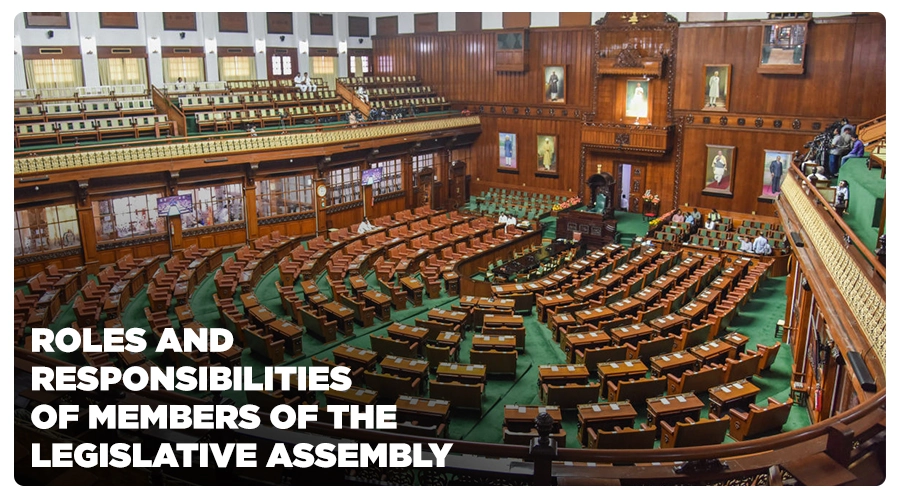Twenty Nine States and Seven Union territories of India have an elected government, going to polls approximately once in five years. About five to seven State Assemblies/UTs on an average, come up for elections, every year, often spread through the months. Given the resources needed to conduct such frequent elections and the load on the governance thereof, many stakeholders have raised questions on the necessity to hold elections in this manner. The debate on Simultaneous elections has been gaining political and public interest in the light of several state elections taking place in the coming year. The NDA government has expressed their interest in bringing this methodology to a reality when the country will face its next national election in 2019.
What does Simultaneous Elections mean?
Simultaneous Elections imply that elections to all the three tiers of democratic institutions take place in a synchronized and coordinated fashion. Meaning that a voter casts his/her vote for electing members for all tiers of the Government on a single day.
The main argument to have the elections for state and center be conducted simultaneously are the high cost of holding elections all year round. The second argument made is that when there are elections in states, the imposition of Model Code of Conduct (MCC) puts on hold the entire development programme and activities. The idea is that if all elections are held at once, it will give a clear five years to the governments and political parties to focus on governance without frequent disruptions of development activities.
How is the budget for elections earmarked?
The Secretariat of the Commission has an independent budget, which is finalized directly in consultation between the Commission and the Finance Ministry of the Union Government.
The primary expenditure on the actual conduction of elections is, however, reflected in the budgets of the concerned constituent units of the Union – States and Union Territories. If elections are being held only for the Parliament, the expenditure is borne entirely by the Union Government while for the elections being held just for the State Legislature, the expense is wholly borne by the concerned State. In case of simultaneous elections to the Parliament and State Legislature, the expenditure is shared equally between the Union and the State Governments. For Capital equipment, expenditure related to preparation for electoral rolls and the scheme for Electors’ Identity Cards too, the expense is shared equally. Election Calendar will help in the long-term planning of the governance and policy-making issues. Like the US where there is a preset calendar that will more or less stay fixed allows the citizen to prioritize participating in the electoral process. Every four years, the same format is expected. In the Indian context, there are two calendars to be held, one for the State Assemblies and the other, for the National election. This will address the concerns of simultaneous polls. At the same time, it helps in minimizing the election expense on the state exchequer, preserve the federal spirit of our nation, and help keep the focus on state-level issues – two different governments which they would be elected by exercising their franchise. Various committees have been constituted at different points in time through successive governments for the recommendation on holding elections together. Based on these recommendations, an analysis paper of Niti Aayog of India suggested that a focused group of stakeholders comprising Constitution and subject matter experts think tanks, government officials and representatives of various political parties come together and work out appropriate implementation-related details. This includes drafting suitable Constitution and statutory amendments, agreeing on a useful framework to facilitate a transition to simultaneous elections, developing a stakeholder communication plan, etc. There are also arguments against simultaneous elections. For example, what will happen to elected governments who have not completed their terms? In a Federal Structure, would the issues of State get mixed up with National issues, often swaying towards the Central manifesto? Several electoral reforms are waiting to be implemented to improve the functioning of our democracy. We need to simultaneously address them along with exploring the option of simultaneous elections. A hasty step on this policy matter without due diligence may lead to more damage to our polity rather than bringing reform. Following is illustrative of this gap in the case of State of Karnataka and Union elections: Such variances between the state and union elections are commonplace and generally, the country looks like in one large electioneering mode. Holding simultaneous in India is both complex and contentious. The arguments in support are cost and convenience. Against this, there are issues of federalism, which includes regional aspirations and the inherent nature of the legislative system that can get truncate an elected government before the conclusion of the five-year term. While simultaneous elections limit distractions from governance, dissolving a government under certain circumstances is a democratic right. This is an issue of tremendous importance, and much debate and reconciliation are needed before a final call could be taken on the future course of action.Current Status
Conclusion






